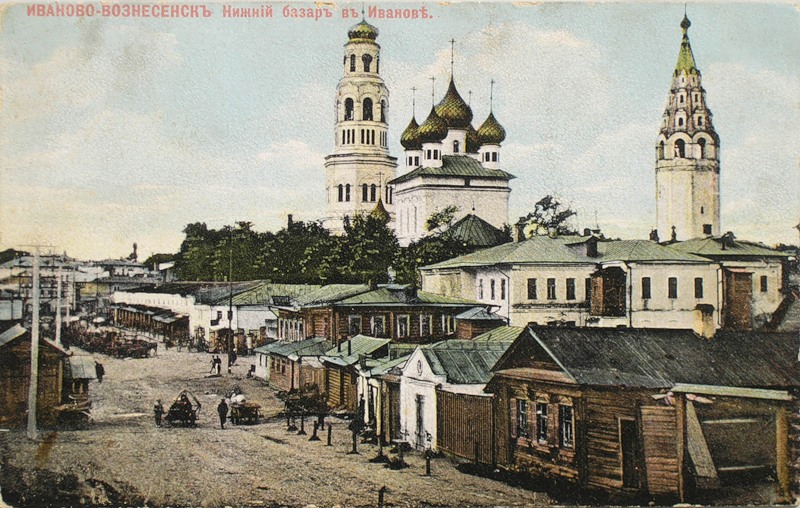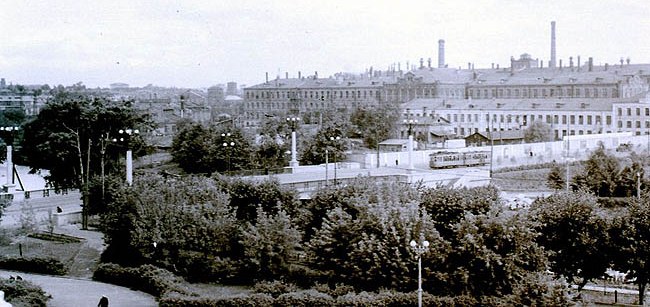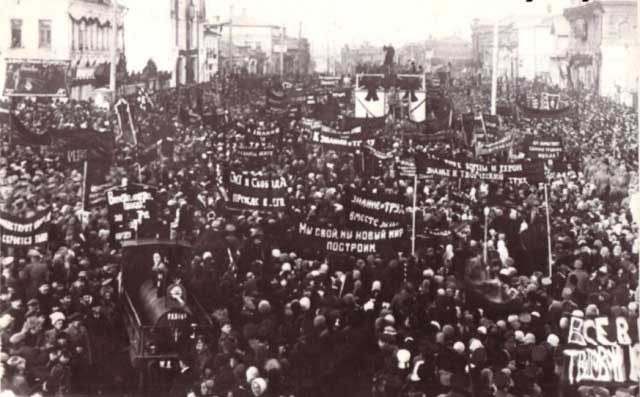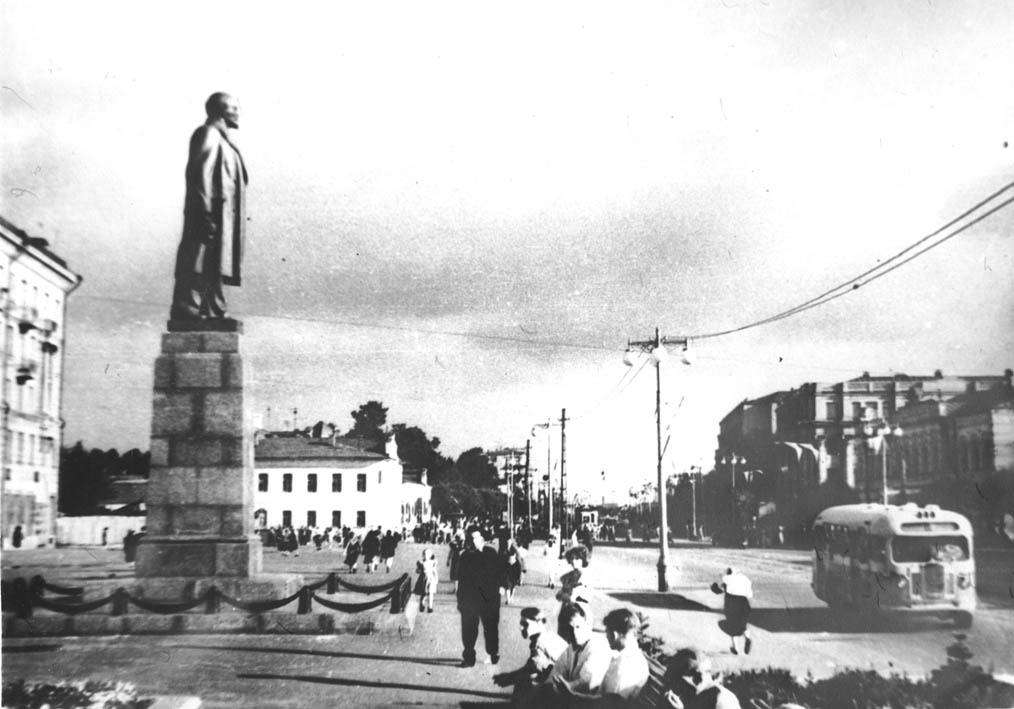History of Ivanovo
16th Century
First Mention
Ivanovo was first mentioned as a village (selo) in 1561. According to legend the village and surrounding lands were given by Tsar Ivan the Terrible to the Cherkassky princes - the family of Ivan the Terrible’s second wife, Maria Cherkasskaya, who originated from the North Caucasus.
17th Century
Shuisky and Cherkassky Princes

In the early 17th century the village of Ivanovo was given to the Shuisky princes, a branch of the Ryurikid dynasty based in nearby Shuya. During this time the village was noted as having 123 homesteads, making it a rather large village. Another census was conducted in 1630 and the amount of homesteads had dropped to 89, demonstrating the destructive effect the Times of Trouble had on the village. In 1638 the village passed back to the Cherkassky princes. During this period the city developed with its inhabitants becoming involved in various forms of trade and crafts. A census in 1667 showed the amount of homesteads had increased to 274.
18th Century
Beginnings of the Textile Industry

By the early 18th century enterprising peasants were buying up linen weaved by others and selling it on. In 1742 the first textile mill was established in Ivanovo and more would follow later. In 1743 the village passed to the Sheremetev family as Count Pyotr Sheremetev married the daughter of Prince Aleksey Cherkassky. In the 1780s groups of successful and educated peasants led by Osip Sokov went to Shlisselburg near St Petersburg and gained experience of the textile trade there, which was founded by foreigners. The group later returned to Ivanovo with new knowledge of dyes and foreign equipment and founded a new textile factory which became extremely successful. In 1778 Ivanovo became part of the Shuya District of the Vladimir Viceroyalty, which was later made the Vladimir Governorate.
19th Century
Russian Manchester and the City of Brides

By the 19th century it was said that the whole village of Ivanovo had turned into a giant textile factory. In the mid-19th century an industrial revolution took place in Ivanovo as its workshops were mechanised, further increasing the output of linin and chintz. Due to this Ivanovo became known as 'Russian Manchester' after the leading city of the textile trade at the time. In 1853 neighbouring villages were reorganised as the Voznesenksy Posad urban settlement. The abolition of serfdom in 1861 brought in new waves of workers seeking a better life in Ivanovo's textile mills. So many women flocked to Ivanovo to find work that it began to be called the 'City of Brides' as it was believed to be the ideal place to find a bride among the many female textile workers. In 1871 the textile centre of Ivanovo was merged with the industrial centre of Voznesensky Posad forming the city of Ivanovo-Voznesensk within the Vladimir Governorate. Today the area above the River Uvod is what was formerly Voznesensky Posad, while that south of the river is what was the village of Ivanovo.
20th Century
Revolutionary Period

The extremely harsh conditions faced by the workers of Ivanovo-Voznesensk's textile trade often led to strikes. During the 1905 Revolution a city-wide soviet (council) of worker deputies was organised which is often credited with being the first soviet to be established, thus explaining another nickname of Ivanovo - 'City of the First Soviet'. A massive strike was organised by revolutionaries, including Mikhail Frunze, which lasted for 72 days. At one point of the strike Tsarist troops opened fire on protesters near the River Talka. The strike was only ended when hunger forced the strikers to accept the factory owners’ partial concessions. In 1915 during the First World War, mass strikes hit Ivanovo-Voznesensk's textile industry twice more in May and in August. Both strikes were organised by local Bolsheviks. On 10 August 1915, Tsarist troops once again opened fire on protesters.

In 1918 the new Soviet government made the city the administrative centre of the newly established Ivanovo-Voznesensk Governorate. In 1929 this was reorganised as the Ivanovo Industrial Region which incorporated parts of the modern-day Vladimir and Yaroslavl Regions. In 1932 the city gained its current name of Ivanovo and in 1936 it became the centre of the Ivanovo Region.
Second World War

Ivanovo was an important home front city during the Second World War. In 1941 it was located close to enemy lines and plans were developed for its defence. Refugees fled to the city and injured soldiers were also hospitalised here. In addition to producing armaments and sending its citizens to the front to fight, Ivanovo naturally also made good use of its textile industry to help the war effort. Between 1941 and 1945 over 100 million metres of fabric were donated, enough to make uniforms for over 12 million soldiers.


 History
History